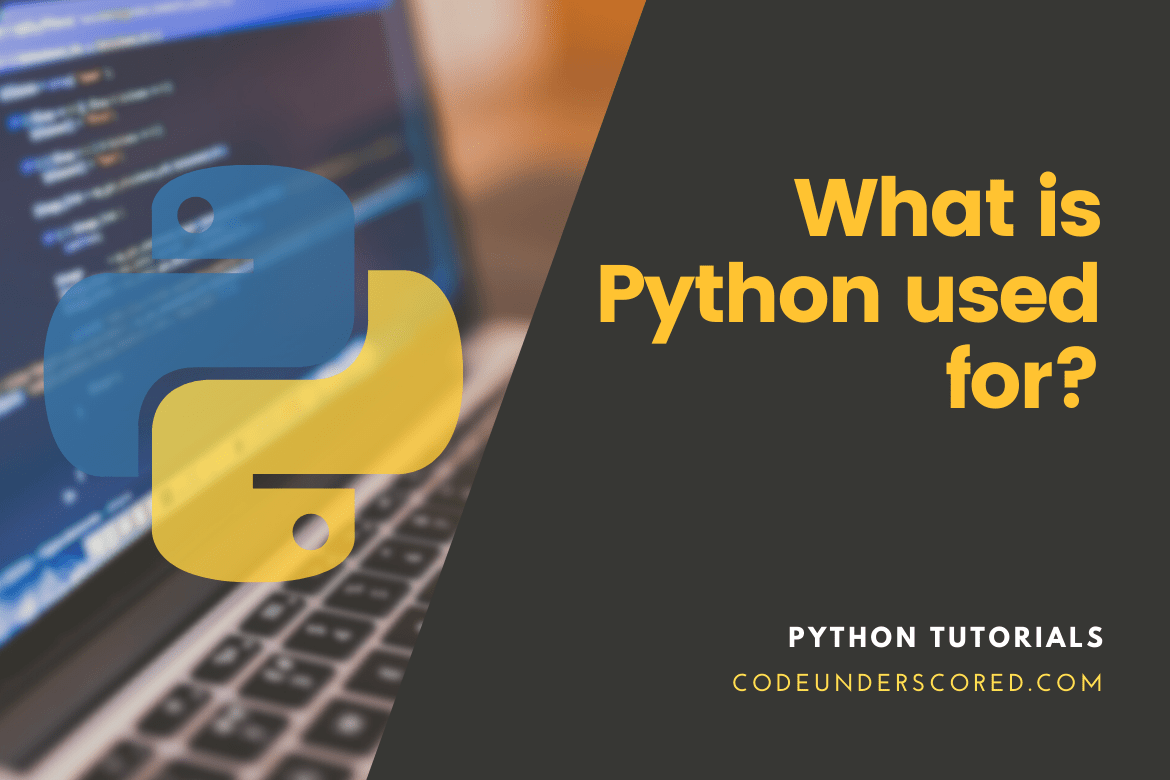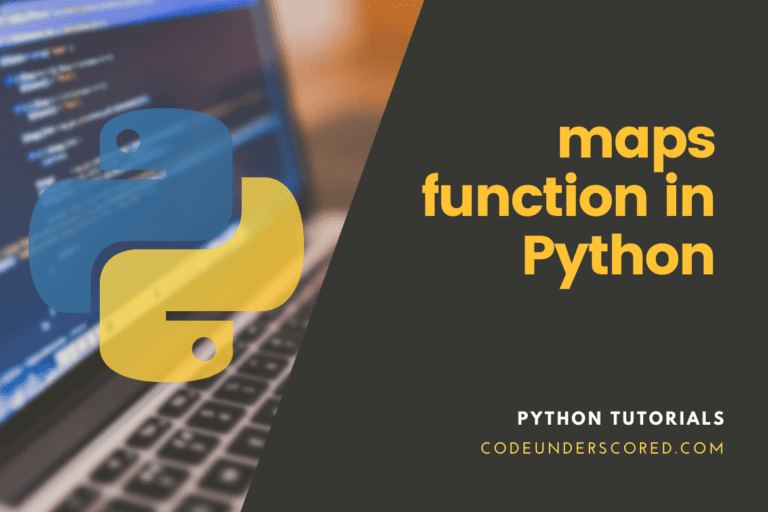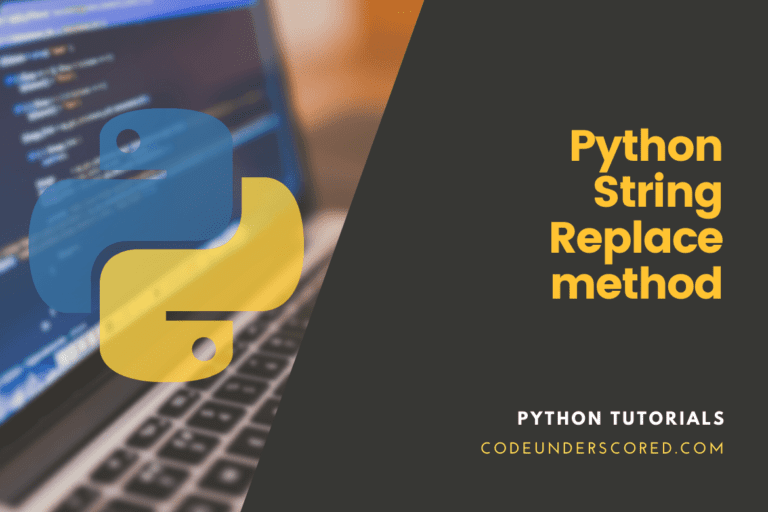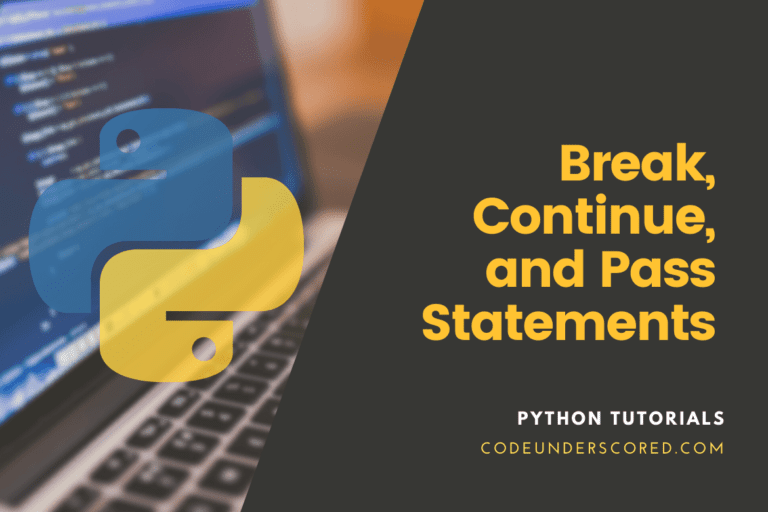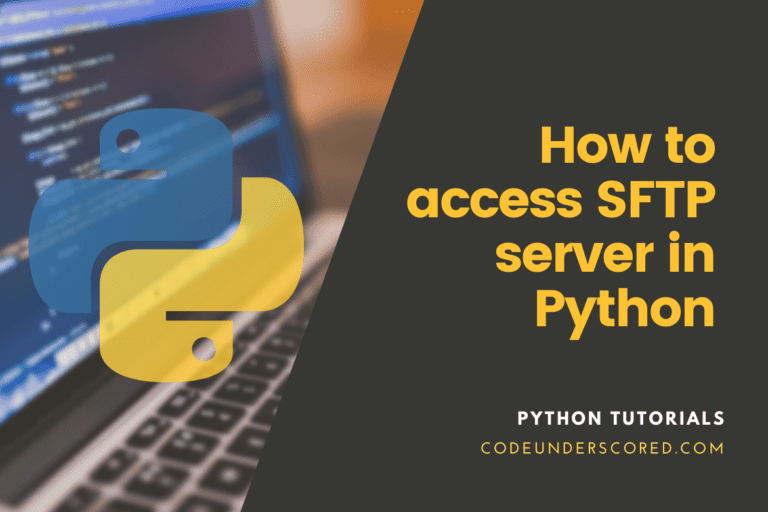Python has recently become one of the most widely used programming languages on the planet. It’s utilized in various applications, including machine learning, website development, the Internet Of Things, and software testing. It is suitable for both developers and non-developers.
Python, one of the most widely used programming languages, has been used to construct anything from Netflix’s recommendation system to self-driving car software. Python is a general-purpose programming language. Various tasks find it very useful, including data science, software and web development, automation, and just getting stuff done in general.
Let’s look at Python, what it can accomplish, and how to use it to your advantage.
What exactly is Python?
Python creates websites and software, automates tasks, and performs data analysis – it is not just any other programming language. Python can develop a wide range of applications and isn’t specialized for any particular problem because of its general purposes. Because of its versatility and beginner-friendliness has become one of the most widely used programming languages today.
According to RedMonk, an industry analyst firm, it is the most popular programming language among developers.
Python’s history
Python is not just a high-level. It is also an interpreted language that may be used for various tasks. Guido van Rossum created the language, which was initially released in 1991. Python’s goal, according to Guido, is to be an open-source, interactive programming language. He hoped to get other developers to utilize it as well. Python is based on the C programming language, which aids its performance.
The purpose of CPython is to convert Python scripts to C and make direct C-level API calls into the interpreter. The clarity of Python’s code makes it ideal for long-term projects. It is a good option for a variety of businesses. Developers began to utilize Python for side projects, in addition to using it in substantial business projects.
We are hopeful that Python’s core objective is now clear to you. Python places a premium on readability and performance. Virtually all operating systems can run Python. That means we are yet to know of one that does not support it.
What are the reasons for using Python?
- Readable and Maintainable Code
- Multiple programming paradigms that are compatible with the most popular platforms and operating systems
- Standard Library that is dependable
- Frameworks & Tools for Open Source
- Test-Driven Development which simplifies Software Development
- Python’s readability and ease of use make it ideal for quickly creating prototypes.
- The majority of automation, data mining, and big data solutions employ Python. It is because it is the most appropriate language for general-purpose jobs.
- Python is far more efficient than languages like C# and Java when it comes to coding. Experienced Python developers are also more organized and productive while working with the language.
- Python is straightforward to learn, even if you aren’t a great programmer. It makes it an excellent alternative for large development teams with multiple programmers. To get started with the language, all you need is a little effort and a lot of practice.
- Python also powers Django, a complete and open source web application framework. Frameworks like Django and Flask can help make the development process go more smoothly.
- It has a comprehensive support base, which can be attributed to being open source and community-produced. A large number of programmers uses the language regularly, and its core functionality is constantly being developed.
What is the purpose of Python?
Python as a general-purpose language has unending uses, including data analysis, data visualization, automation of tasks, and software and web development, a broad field.
Python is not just used by programmers but also by non-programmers. Some non-programmers who have found Python extremely useful include accountants and scientists, who use it for various everyday tasks. Such as arranging finances due to its relative ease of learning.
In his book, Python for Everyone, Charles R Severance, a University of Michigan and Coursera instructor, notes, “Writing programs is a creative and fulfilling hobby. You can build programs for a variety of purposes, including making a living, solving a challenging data analysis challenge, having fun, and assisting others in solving problems.”
Here, we take a deep dive into some of the most prevalent Python applications.
Machine learning and data analysis
Python is now a data science standard. It facilitates professionals like data analysts and other professionals to perform complex statistical computations. In addition, they produce data visualizations, design machine learning algorithms, handle and analyze data, and perform other data-related tasks using the language.
The kind of data visualizations that can be created using Python are vast and diverse. Some of them include histograms, pie charts, bar graphs, three-dimensional plots, and line charts. TensorFlow and Keras are two Python frameworks that let programmers build data analysis and machine learning systems more rapidly and efficiently.
Tensor flow is a machine learning platform built entirely in Python. It is capable of performing complex calculations. It is utilized in NLP, voice recognition, and user-friendly responses out of the box.
Pytorch is a machine learning library that may be used in production. It makes use of the machine’s CPU and GPU to allow apps to perform calculations faster.
NumPy is the most widely used Python module for performing complex mathematical computations. It contains a large number of linear algebra equations, such as the Fourier transformation.
Data science and machine learning have recently become popular in academic study and business. However, you must have a solid mathematical foundation before you can begin mastering it.
Scikit-Learn is at the core of popular Python packages for machine learning. Scikit-Learn is the most popular Python machine learning library. This is because you can create machine learning algorithms like linear regression, logistic regression, and decision trees with not so many lines of code.
Another Python library for creating machine learning algorithms is Statsmodel. The detailed explanation that Statsmodel delivers after developing a machine learning model is why we prefer it to Scikit-Learn.
We can look at metrics like the standard error, model coefficients for each variable, and p-values with only one line of code.
It provides us with all of the information we require regarding the model’s performance at a single glance.
Daily, data scientists handle various duties, including data collection, preprocessing, analysis, machine learning, and visualization.
If you’re new to data science, you may have taken a Python or R course and are familiar with the data science life cycle foundations.
We’ll explore some significant Python packages for data science in this article. Almost any task you desire to complete can be found in a library.
MySQLConnector
MySQLConnector is a handy tool; when the data you need to extract is stored in a SQL database, you’ll need to import it into Python before preprocessing and analyzing it.
MySQL connector is a Python package that allows you to create a connection to a SQL database.
You can quickly load database tables and then convert them to Pandas data frames for additional data manipulation when engaging the services of MySQLConnector. Further, it is crucial if one of your desires is to create databases and write to them.
BeautifulSoup
When making business decisions, companies frequently rely on external data – they may want to compare costs of competitor items, evaluate competitor brand reviews, and so on.
BeautifulSoup is a Python package for scraping data from any web page.
Collecting Data
Data gathering is the initial step in tackling any data science problem. This information is sometimes offered in the form of a SQL database or an Excel spreadsheet. You’ll have to extract data yourself at other times, either using APIs or web scraping.
We will divulge popular Python data collecting libraries below. That, however, relies on the needed data for collection. Nevertheless, we utilize these libraries frequently, and they’ve made our data science workflow a lot easier.
APIs for social media
Daily, social media networks such as Twitter, Facebook, and Instagram generate massive volumes of data. This information can be used in a variety of data science initiatives.
Internal data alone makes it difficult for corporations to measure overall brand sentiment on a wide scale. As a result, social media analysis to obtain data for purposes such as churn prediction and client segmentation is crucial.
Collecting data from social sites is also not tricky since numerous publicly available APIs may assist you in doing so swiftly. Among them are the following:
- Tweepy, Twint
- Facebook: Facebook-API-in-Python
- Python-YouTube is a YouTube channel dedicated to Python.
Pre-processing of data
The data in the real world is soiled. It isn’t always in the form of an Excel spreadsheet or a.csv file. Instead, it may be in the form of a SQL database, a text file, a JSON dictionary, or even a PDF document.
As a data scientist, you’ll spend a significant amount of time building data frames, cleaning them, and integrating them.
The following Python libraries can assist with data preparation:
Numpy
Numpy is a tool that allows you to perform operations on massive datasets swiftly.
With Numpy, you can convert data frames into arrays, manipulate matrices, and quickly get fundamental population statistics such as the median or standard deviation.
Pandas
Pandas is one of the most well-known and commonly used Python data science packages.
Pandas make it simple to read a variety of file kinds and produce data frames. Then you may come up with methods to quickly preprocess this data, such as cleaning the data frame, removing missing/invalid values, and scaling/standardizing the data.
RegEx
Have you ever encountered erroneous values, strange symbols, or whitespace when working with Pandas data frames? Although RegEx isn’t a package designed expressly for data scientists, We’ve included it because it’s instrumental.
RegEx (or Regular Expressions) can be used to find a set of characters in data.
This Library can be used to locate rows of data that meet specific criteria. It can also preprocess data and delete invalid values that don’t conform to a set of rules.
Analyze the data
Pandas is the most crucial Library for data analysis. We’ve already covered how to use Pandas for data preprocessing, so we’ll now go through one of the most incredible Pandas modules for data analysis:
Pandas-profiling
Pandas-profiling is a precious data analysis package. When you run pandas-profiling on a data frame, it returns summary statistics about the data.
It also gives you a description of each variable, as well as their correlation, distribution, and cardinality.
Seaborn
Visualization is an essential aspect of any data science effort. It’s critical to visualize the dispersion of variables, assess their skewness, and comprehend their relationship.
Seaborn is a library that can be used for this. It’s simple to use and import, and you can create charts with only one or two lines of code.
Plotly
Plotly is another powerful visualization tool in Python. Plotly allows you to create stunning, interactive visuals.
Customizing Plotly visualizations requires a little more code and work.
If you need to verify the distribution/relationship between variables rapidly, we usually utilize Seaborn. Further, if we need to offer visualizations to others, we prefer Plotly because its charts are interactive and attractive.
Plotly also lets you create interactive choropleth maps, which make it simple to plot location data. Plotly’s choropleth maps are the most effective way to present data by region, country, or latitude/longitude.
Web design and development
Python is frequently used to create a website’s or application’s back end—the elements that the user doesn’t see. Sending data to and from servers, processing and interfacing with databases, URL routing, and ensuring security are examples of Python’s role in web development. Python has several web development frameworks. Django and Flask are two popular ones.
Some of the web development positions that require Python are back-end engineers, full-stack engineers, Python developers, software engineers, and DevOps engineers.
The most popular Python web framework is Django. It’s a model-view-controller (MVC) framework that promotes rapid development. It generates files that are well-structured and follow a standard format. In addition, Django provides you with an out-of-the-box project:
- Customizable architecture with a lot of scalabilities.
- Project configurations are stored in a settings module.
- ORM (object-relational mapper) is a program that converts Python code into SQL.
- User management system and admin portal.
- HTML rendering template engine.
- Validation of forms is built-in.
- Preventing vulnerabilities, such as (SQL injection, cross-site scripting, clickjacking, and password management )
Flask is a microframework, which means it doesn’t require installing any specific tools or libraries. You have complete control over the project architecture, as there is no preset database or form validation. You can customize the tools to meet your requirements. For large projects or microservices-based applications, Flask is a rapid answer. It isn’t to say that Flask isn’t a viable alternative for large-scale applications.
Flask was designed to be a simple option for Projects that necessitate a great deal of personalization and those with a Microservices architecture. In addition, it helps in creating web apps in a short amount of time with the fewest possible configurations.
Scripting or automation
If you repeat a task frequently, automating it with Python can help you work more efficiently. Automation can check for flaws across multiple files, convert files, perform simple math, and delete duplicates in data in the coding industry.
Creating procedures that are essentially automated is at the core of scriptwriting.
Relative amateurs can use Python to automate simple computer chores like renaming files, discovering and downloading internet information, and sending emails or SMS at predetermined intervals.
Prototyping and software testing
The process of developing software systems to the last point of testing before deployment can be very tasking. In such a case, Python comes in handy to handle mundane tasks like control building, tracking of issues, and continuous testing during the development stage. In addition, it is a to-go-to tool in case developers wish to automate feature and product testing, especially the new ones. For instance, if you intend to test your software, you can try requestium and green.
Typical tasks
Python isn’t just for data scientists and programmers. Learning Python can open new doors for people in less data-intensive occupations, such as journalists, small business owners, or social media marketers. Python can also help non-programmers simplify some of their daily duties. Here are a few examples of tasks that Python can help you automate:
- Creating spreadsheets from text files
- Assigning responsibilities to family members at random
- Automatically fill out web forms
- Monitoring cryptocurrency values in the stock market
- Make alterations to the names of groups of files. Or you are also changing the list of your groceries.
- Create reminders for yourself, for example, when to take a particular meal.
The Internet of Things (IoT)
Let’s define the Internet of Things as “physical things that connect an embedded system to the internet” for the sake of simplicity. Real-time analytics is another aspect of IoT initiatives. It is critical in projects involving big data, machine learning, data analytics, wireless data networks, and cyber-physical systems.
With the fields mentioned above of application in mind, a programming language should be a bold option. Python checks all of the boxes in this section. Python is scalable, extensible, portable, and embeddable as well.
It makes Python system-agnostic, allowing it to run on various single-board computers regardless of operating system or architecture.
Python is also great at managing and organizing large amounts of data. It’s convenient for data-intensive IoT systems. In addition, Python’s tight ties to scientific computing are another reason it’s the best programming language for IoT applications.
Why is Python so well-liked?
Python is widely used for a variety of purposes. Here’s what makes it so flexible and user-friendly for programmers.
- It features a straightforward syntax that resembles standard English, making it easier to read and comprehend. As a result, it speeds up the development of projects as well as the improvement of existing ones.
- It’s adaptable. Python can be used for a variety of purposes, including web development and machine learning.
- It’s beginner-friendly, making it popular for entry-level coders.
- It’s open-source, which means it’s free to use and distribute, even for commercial purposes.
- Python’s library of modules and libraries—code bundles generated by third-party users to extend Python’s capabilities—is significant and increasing.
Python has a vibrant community that contributes to modules and libraries and serves as a resource for other programmers. Thus, finding a solution to a stumbling block is extremely simple; someone has almost certainly encountered the same issue before.
Questions that are frequently asked (FAQ)
Should I start by learning Python 3 or Python 2?
Python 3 is more up-to-date than Python 2 and has surpassed it in popularity. According to JetBrains, a software development business, 93 percent of Python users surveyed used Python 3. Python 2 was decommissioned in January 2020, meaning it will no longer receive bug fixes, security updates, or new features.
When it comes to learning Python, how long does it take?
Learning the basics of Python might take anything from a few weeks to a few months. However, the latter is highly dependent on how frequently you intend to do this and what you hope to learn. On the other hand, Python has so many applications—and tools to support those applications—that you might spend years studying all of them.
The length of your Python trip will be determined by the tasks you want to complete and if you wish to use Python professionally.
“Being a professional programmer now is a lot easier than it was 20 years ago,” adds Severance. “To get started with programming, you don’t need a bachelor’s degree or years of expertise. With Python’s growing popularity, you can learn the skills you need to start writing software as part of your job in just a few months.”
Today, who uses Python?
Even though hundreds of programming languages are available, Python remains a popular choice among many businesses and organizations.
Python is used by Google, Facebook, Venmo, Spotify, Netflix, and Dropbox, to name a few.
What kinds of jobs make use of Python?
Python is a programming language that can best be said to be general-purpose since it is utilized in a wide range of professions and industries. These are just a few examples of jobs that employ Python:
- Developers
- Analysis of data – a data analyst
- Penetration tester/ethical hacker
- Software developer
- Journalist for data
- Architect for the cloud
- Engineer, Quality Assurance
Conclusion
It should be almost apparent from the discussion herein that Python may be used for various purposes. Python is widely used in a variety of sectors and fields. It runs on all major operating systems. If you want to start a career in programming, this is a beautiful place to start. Python is an excellent tool for a mathematician who has to run a few scripts regularly. Besides, Python is also a fantastic option if you need a scalable web application.

